Letter-sound correlation Phonics Worksheets for Ages 4-9
7 filtered results
-
From - To
Enhance your child's reading skills with our engaging Letter-Sound Correlation Phonics Worksheets for ages 4-9! Designed to promote literacy through fun and interactive activities, these worksheets help young learners connect letters to their corresponding sounds. With a variety of exercises, including matching, tracing, and identifying, children will build a solid phonetic foundation essential for reading success. Our resources align with early childhood education standards, ensuring that your child develops confidence and competence in their phonics skills. Perfect for homeschool settings or classroom use, these worksheets make learning an enjoyable adventure! Get started today and watch your child's reading abilities soar!
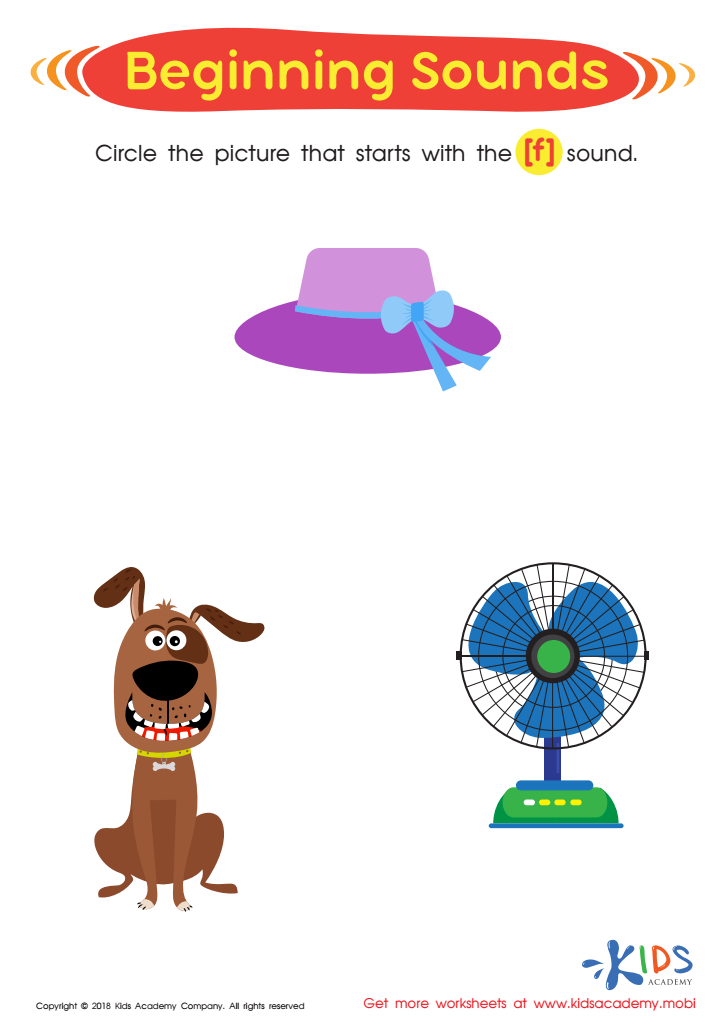

Beginning Sounds Assessment Printable


Letter A Sounds Worksheet
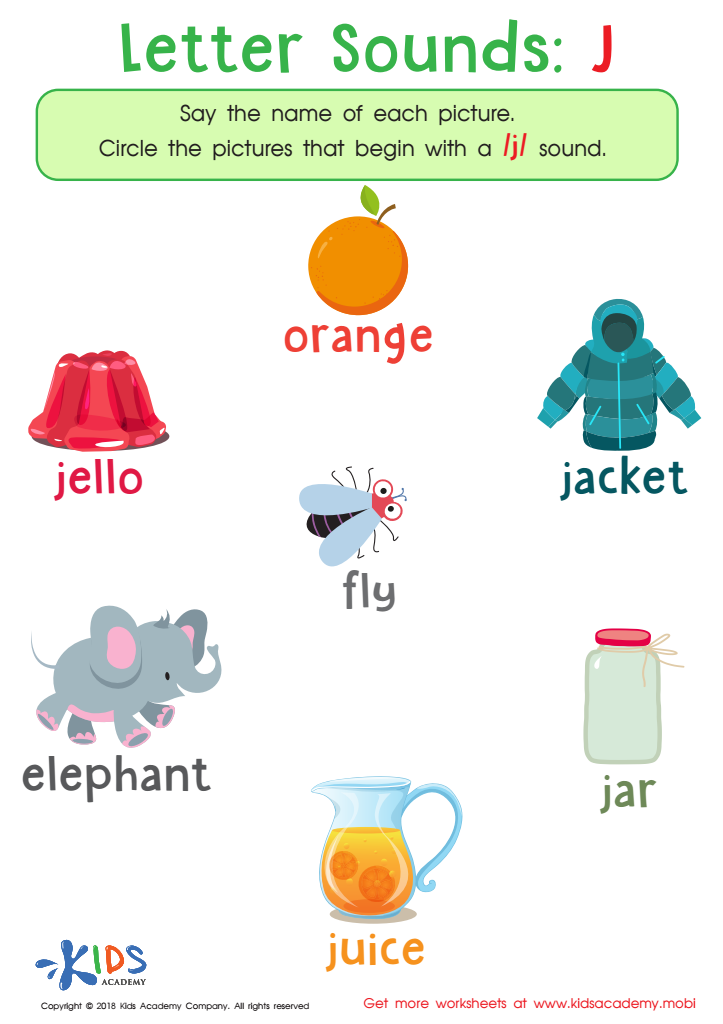

Letter Sounds: J Printable Worksheet


Letter U Sounds Worksheet
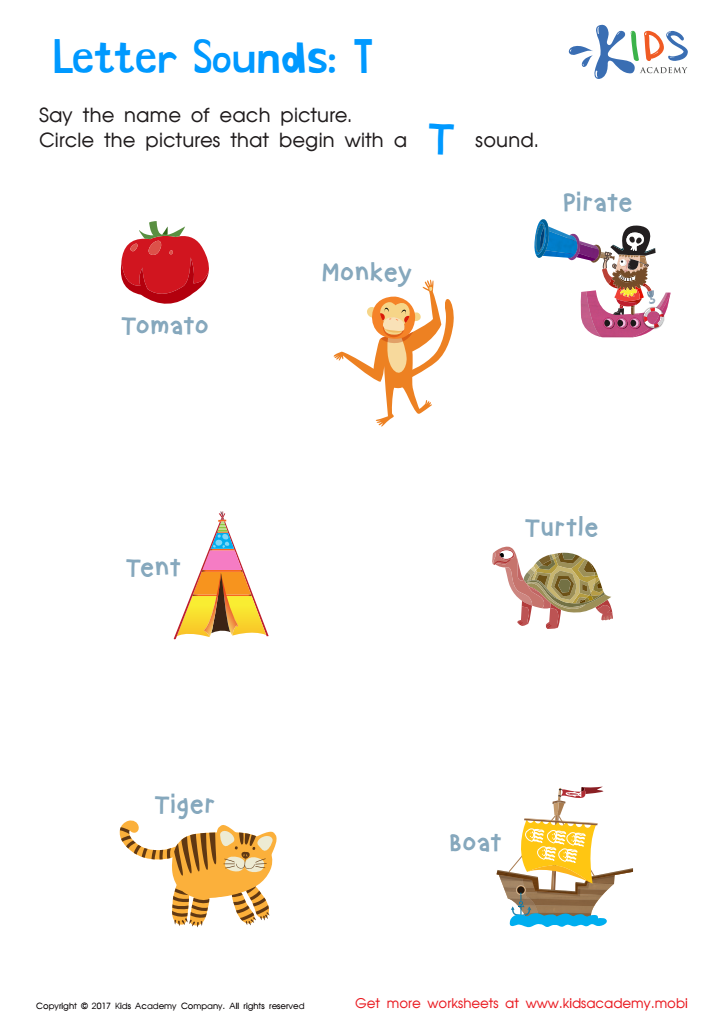

Letter T Sounds Worksheet
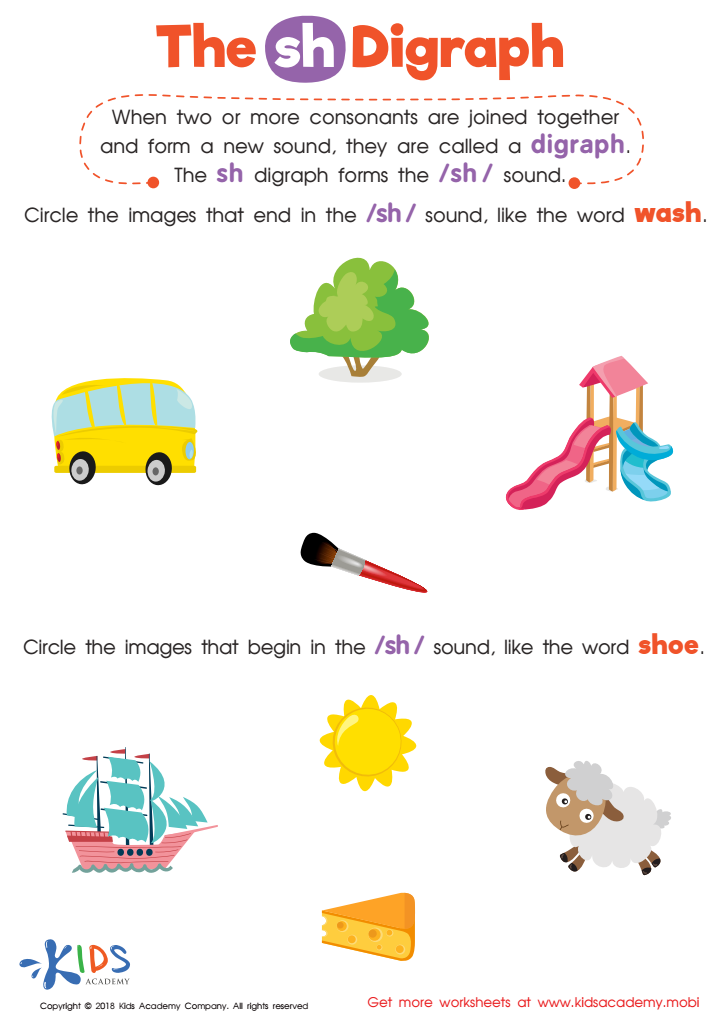

The SH Digraph Worksheet
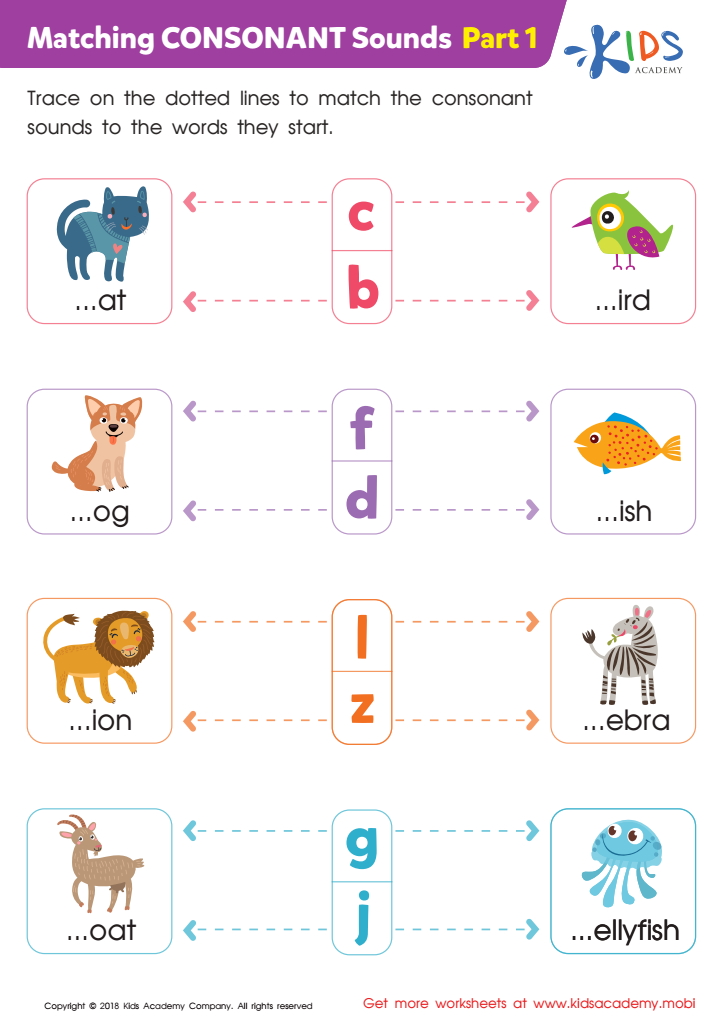

Matching Consonant Sounds: Part 1 Worksheet
Parents and teachers should prioritize phonics, particularly letter-sound correlations, for children aged 4-9 because this foundation is essential for reading success. Phonics teaches children the relationship between letters and their corresponding sounds, enabling them to decode words. Mastering these correlations is critical in early literacy development, as research consistently shows that strong phonics skills contribute to better reading comprehension and fluency.
Understanding letter-sound relationships fosters phonemic awareness, empowering children to construct words and promote spelling skills. This connection enhances vocabulary development, allowing young learners to decipher unfamiliar words, which builds confidence and encourages a love for reading. By nurturing these skills at an early age, teachers and parents can help children develop the ability to independently interpret text, making learning more engaging and accessible.
Furthermore, phonics is often a vital component of educational curricula and standardized assessments. By focusing on letter-sound correlation, adults play an active role in their child's academic success, setting the stage for lifelong learning. Ultimately, fostering phonics skills in early education equips students to become proficient readers, opening doors to further educational opportunities and a world of knowledge. Emphasizing this early learning approach can positively impact children’s literacy and overall academic journeys.

 Assign to My Students
Assign to My Students















